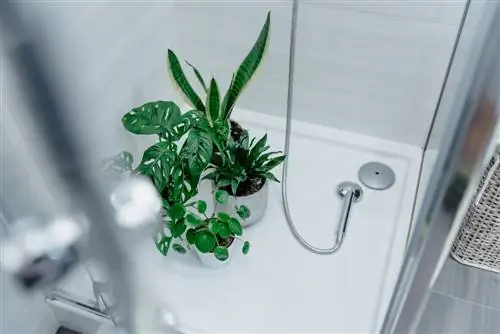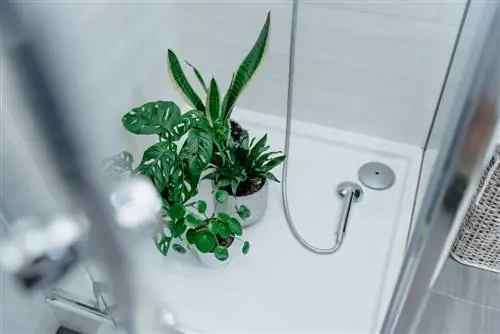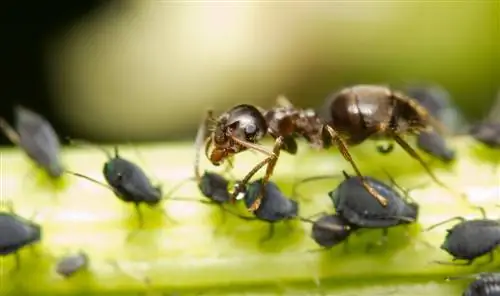- Author admin [email protected].
- Public 2024-01-05 20:48.
- Last modified 2025-01-23 11:22.
The leaves curl up strangely, change color or even fall off - the damage is great, but the cause is tiny. Aphids not only attack outdoor plants, but also like to nest on indoor plants. Fortunately, the fight can also be achieved completely without chemicals. Read on this page how you can quickly get rid of the pests.

How to control aphids on houseplants?
Aphids on houseplants can be controlled biologically by using beneficial insects, carefully showering the plant, spraying a nettle decoction or using yellow tablets. Also pay attention to optimal location and care conditions to prevent infestation.
Identifying aphids
Use the following characteristics to identify the pests:
Appearance of aphids
- small animals, sometimes winged, sometimes unwinged
- green, gray, yellow or brown bodies
- between 3 to 7 mm in size
- have a stinging proboscis
Symptoms on the plant
- floury coating on the leaves (honeydew)
- Ants in the apartment
- small animals on the petioles and on the undersides of the leaves
- Leaves curl up
- yellow discoloration of the leaves
- Plant death
Causes
The usual care mistakes are usually to blame for an aphid infestation. Weakened plants are particularly affected because they cannot generate enough strength on their own to ward off the pests. This reduced immune defense is evidence of unfavorable location conditions. Possible care errors are
- too high or low humidity
- wrong lighting conditions
- incorrect fertilization
- incorrect watering behavior
Note: Aphids are sometimes introduced from new commercial plants.
Measures
Fortunately, with early detection, it is possible to combat aphids with simple, biological means.
Beneficial insects
Beneficial insects are probably the most environmentally friendly and at the same time most effective method of combating aphids on houseplants. The animals feed on the pests without harming the plant. However, you should adapt the location conditions to the needs of the pest controller. In stores you can get:
- lacewings
- hoverflies
- Flower Bugs
- Parasitic wasps
- or gall midges
Shower plant
If the infestation is only minor, showering the plant can help. Aim the jet primarily at the undersides of the leaves, as this is where the aphids reside. It is a bit laborious to pick the little creatures off manually. However, if the affected plant is a very sensitive specimen that cannot tolerate excessive water, you are better off using this method.
Tip
You can also blow the aphids away with a hairdryer or brush them off with a brush.
Stinging nettle broth
This home remedy is very easy to make:
- Dip 100 g of nettles in 1 liter of water.
- Boil the water and let it cool down well.
- Let the liquid steep for two days.
- Sift the leaves.
- Spray the broth onto the leaves using a spray bottle.
Tip
Here, too, you should especially treat the undersides of the leaves. Can't find nettles? Alternatively, you can also use a spray solution based on neem or rapeseed oil.
Yellow boards
Sometimes aphids can even fly. In this case, yellow stickers from specialist retailers save you from having to collect them yourself. Hang the yellow boards close to the plant. As soon as the animals climb up, they stick to a sticky film. You should therefore replace your yellow stickers after a while.






